mostra
29 Maggio 2015 > 01 Novembre 2015
FOOD dal cucchiaio al mondo
orario museo
lunedì chiuso
da martedì a domenica 11 – 19
la biglietteria è aperta fino a un’ora prima della chiusura del Museo
lunedì chiuso
da martedì a domenica 11 – 19
la biglietteria è aperta fino a un’ora prima della chiusura del Museo
biglietto unico valido fino al 17 aprile, per tutte le mostre in corso, a causa del riallestimento di 2 gallerie
– per i giovani da 18 a 25 anni (non compiuti);
– per gruppi a partire da 15 persone;
– possessori biglietto d’ingresso La Galleria Nazionale, Museo Ebraico di Roma;
– con esibizione della tessera o badge di riconoscimento: Accademia Costume & Moda, Accademia Fotografica, Biblioteche di Roma, Centro Sperimentale di Cinematografia, Enel (per titolare badge e accompagnatore), FAI Fondo Ambiente Italiano, Feltrinelli, Gruppo FS, IN/ARCH Istituto Nazionale di Architettura, Sapienza Università di Roma, LAZIOcrea, Palazzo delle Esposizioni, Amici di Palazzo Strozzi, Accademia Nazionale di Santa Cecilia, Scuola Internazionale di Comics, Teatro Olimpico, Teatro dell’Opera di Roma, Teatro di Roma, Università degli Studi di Roma Tor Vergata, Youthcard;
– presentando alle casse un biglietto Trenitalia con destinazione Roma effettuato tra il 27 novembre 2024 e il 21 aprile 2025
valido per un anno dalla data di acquisto
– minori di 18 anni;
– possessori della card myMAXXI;
– il giorno del tuo compleanno presentando un documento di identità;
– con esibizione di EU Disability Card o lettera di accompagnamento di associazione/ente ospitante: persone con disabilità e accompagnatore, persone con lo spettro autistico e accompagnatore, persone sorda, persone con disabilità cognitive e bisogni comunicativi complessi e caregiver, persone affetta da patologie gravi e loro caregiver, ospiti di centri di prima accoglienza e antiviolenza e operatori accompagnatori, residenti di comunità terapeutiche e operatori accompagnatori;
– dipendenti MiC;
– giornalisti che possano comprovare la propria attività;
– accompagnatori e guide turistiche dell’Unione Europea, munite di licenza (rif. circolare n.20/2016 DG-Musei);
– 1 insegnante ogni 10 studenti;
– soci AMACI;
– membri CIMAM International Committee for Museums and Collections of Modern Art;
– membri ICOM;
– da martedì a venerdì (esclusi festivi) studenti e ricercatori universitari di storia dell’arte e architettura dell’Unione Europea, studenti delle accademie di belle arti pubbliche (iscritte AFAM) e studenti Temple University Rome Campus;
– docenti IED Istituto Europeo di Design, docenti NABA Nuova Accademia di Belle Arti, docenti RUFA Rome University of Fine Arts;
– con esibizione della tessera o badge di riconoscimento: Collezione Peggy Guggenheim a Venezia, Castello di Rivoli Museo d’Arte Contemporanea, Sotheby’s Preferred, MEP. Maison Européenne de la Photographie;
per gruppi di 12 persone in uno stesso turno di visita; possessori della membership card myMAXXI; giornalisti iscritti all’albo con tessera di riconoscimento valida
minori di 14 anni
disabili + eventuale accompagnatore; minori di 3 anni (biglietto non necessario)
La Collezione di arte e architettura del MAXXI rappresenta l’elemento fondante del museo e ne definisce l’identità. Da ottobre 2015 è esposta con diversi allestimenti di opere.

lunedì chiuso
da martedì a domenica 11 – 19
la biglietteria è aperta fino a un’ora prima della chiusura del Museo
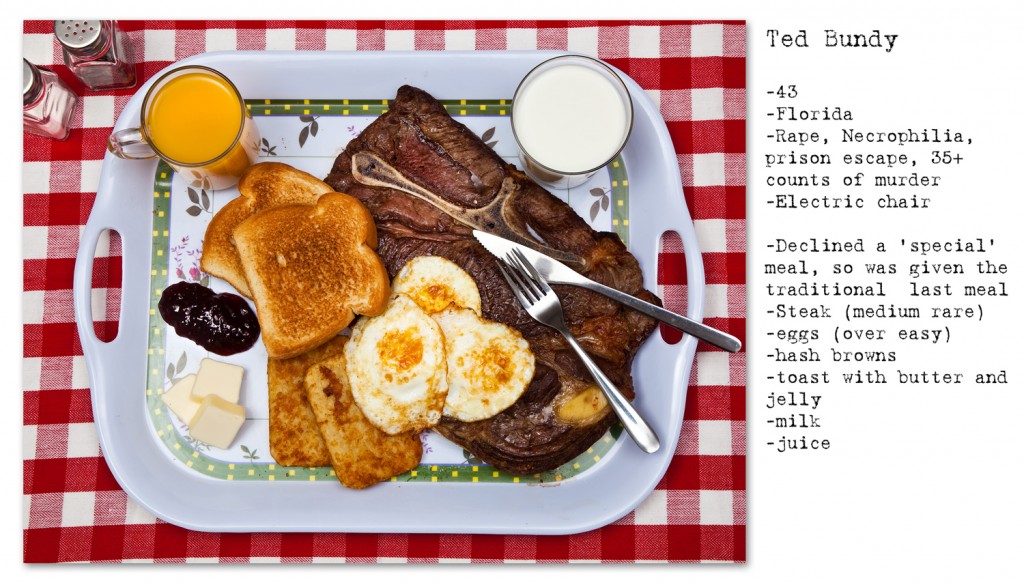
Introdotta da un omaggio all’arte barocca (la Cacciata di Adamo ed Eva dal Paradiso Terrestre del Domenichino), porta il visitatore alla scoperta di come i gesti necessari al maestro de tè siano essenziali alla definizione del modulo dello spazio domestico giapponese, di come la rappresentazione del pasto possa far riflettere sulla misura spaziale e temporale della cella del condannato (nelle fotografie di Hargreaves); di come il cibo interpreti lo straniamento dello spazio “fuori dallo spazio” dell’astronauta Samantha Cristoforetti.
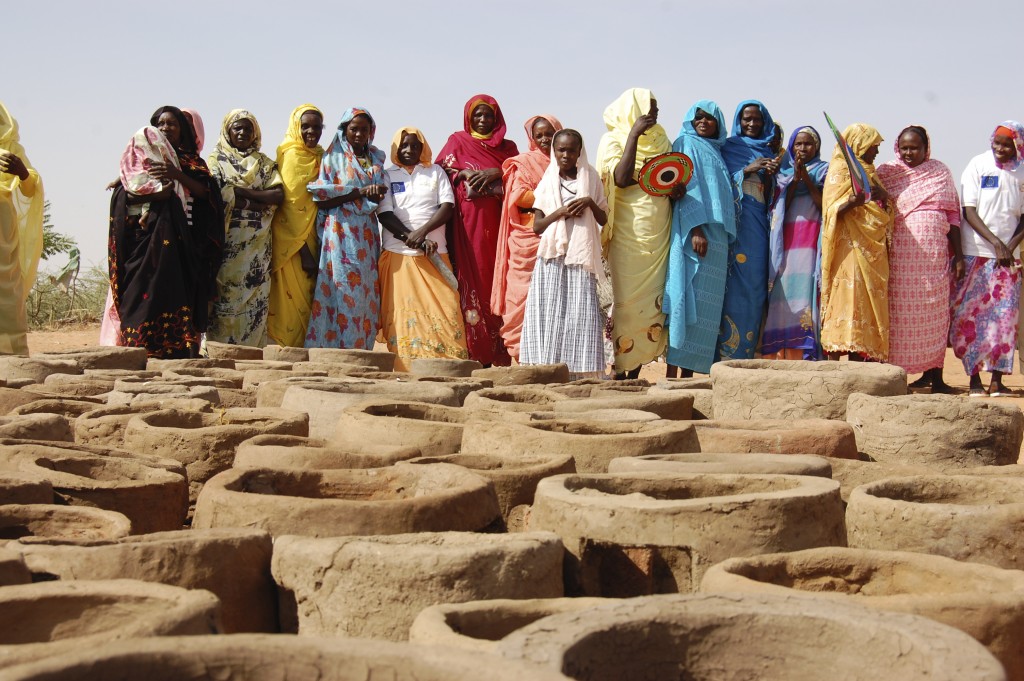
WFP (World Food Program) Safe Stoves 03 Women in Darfur graduate from WFP's SAFE program that enables them to make their own fuel-efficient cook stoves. Copyright: Pia Skjelstad / WFP
Mentre i maestri del Bauhaus ridefinivano il concetto complessivo di abitazione, Margarethe Schütte-Lihotzkydava forma, col suo rivoluzionario concetto di “cucina componibile”, allo spazio domestico moderno. Oltre alla ricostruzione della sua Frankfurt Kitchen,la sezione ospita altri progetti di spazi per la preparazione o la conservazione del cibo che hanno modificato o modificano radicalmente il nostro modo di pensare: dai contenitori Tupperware in pvc degli anni Cinquanta e dal primo frigo domestico, fino alle immagini delle cucine “sicure” e a basso consumo energetico realizzate dal WFP per le donne dei paesi in via di sviluppo.
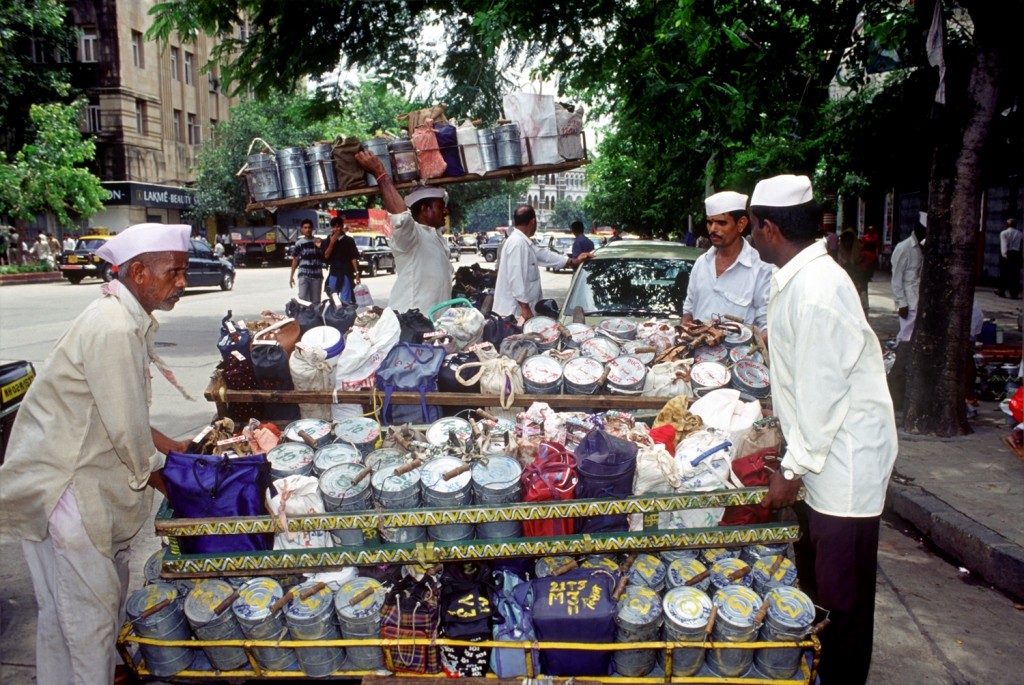
RMA Architects Dabbawala Lunch Delivery System, 2014 Mumbai. Photo Credits: Rajesh Vora
La sezione indaga soprattutto il ruolo sociale del cibo, presente nella strada e nella piazza come generatore di vita pubblica. Oltre alle immagini e ai video della performance di Gordon Matta-Clark e del suo ristorante a Lower Manhattan, in mostra troveremo foto, video e oggetti dei dabbawala di Mumbay, una ricostruzione della White Limousine Yatai, il ristorante mobile dei giapponesi Atelier Bow-Wow, il supermercato virtuale made in Corea dove per far spesa basta usare il QR code mentre si aspetta la metropolitana.
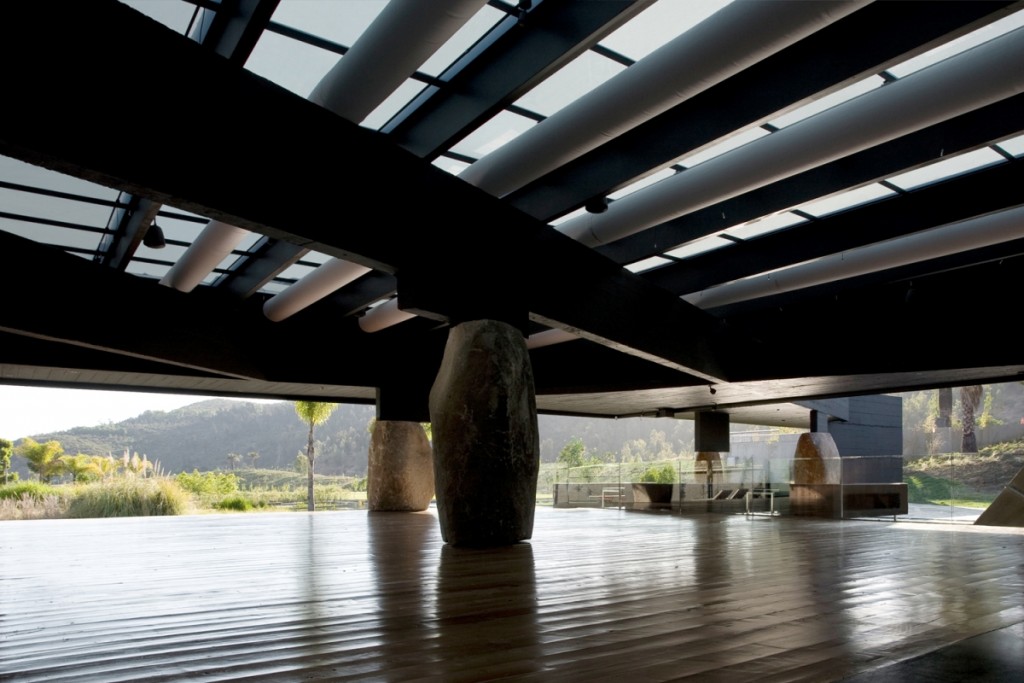
SMILJAN RA DIC´ CLARKE, Ristorante Mestizo, 2005. Santiago del Cile (Cile)
Fin dal Settecento gli architetti inseguono l’utopia dell’integrazione perfetta tra città e agricoltura. Dai disegni di Ledoux alla Ferme Radieuse di Le Corbusier, dalla Broadacre di Wright ai progetti contemporanei di agricoltura urbana, la sezione mostra foto e modelli di città/mercati/luoghi di incontro e integrazione nei quali il cibo è l’attore principale della qualità sociale e dell’”effetto città”. Osserveremo il Markt Hal di Rotterdam di MVRDV e la riqualificazione del famoso mercato di Santa Caterina a Barcellona di Miralles Tagliabue, gli alveari urbani di Snøhetta e un progetto site specific di orto urbano “agricivico” di Richard Ingersoll.
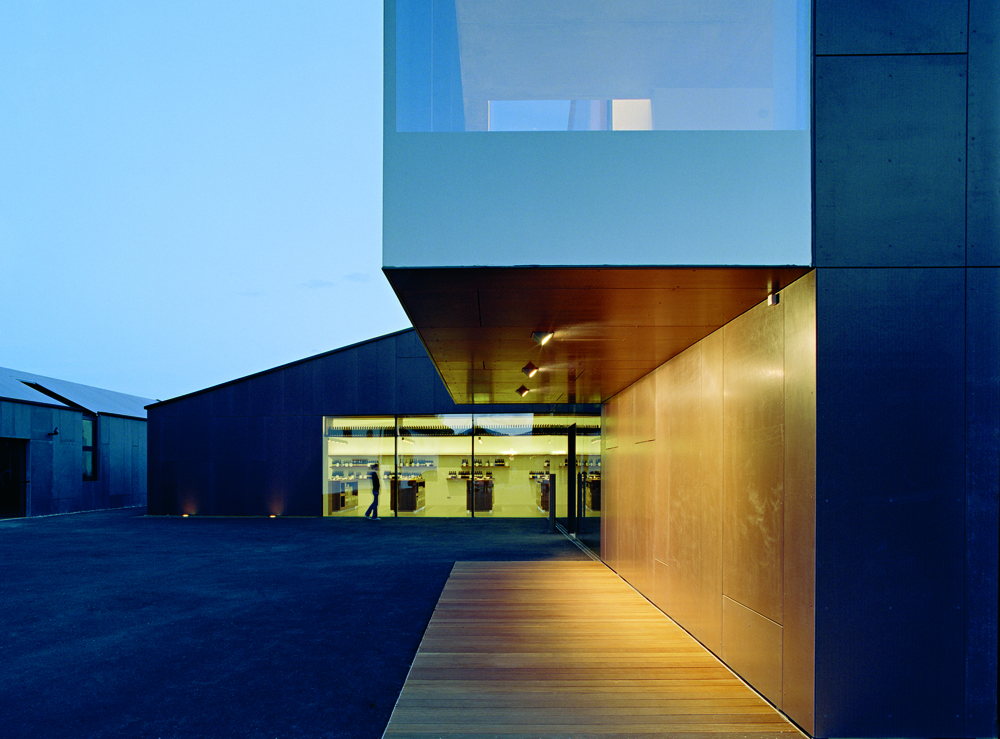
FEL D72, Winecenter. 2006. Caldaro (Italia). Foto ©HerthaHurnaus
Paesaggio agricoltura e cibo sono una triade onnipresente nella discussione sui territori contemporanei.
Nella sezione vengono esposti quei progetti che meglio traducono la centralità evidente di questo tema in bellezza e innovazione da un lato, e in immagini potenti e controverse dall’altro: dalle saline (in mostra, tra gli altri, il progetto fotografico di ZivKoren sull’estrazione del sale in Etiopia) alla Génoscope de Lanaud, progettata da Jean Nouvel in Francia, a una selezione dei molti e celebratissimi progetti di cantine in Italia e all’estero.
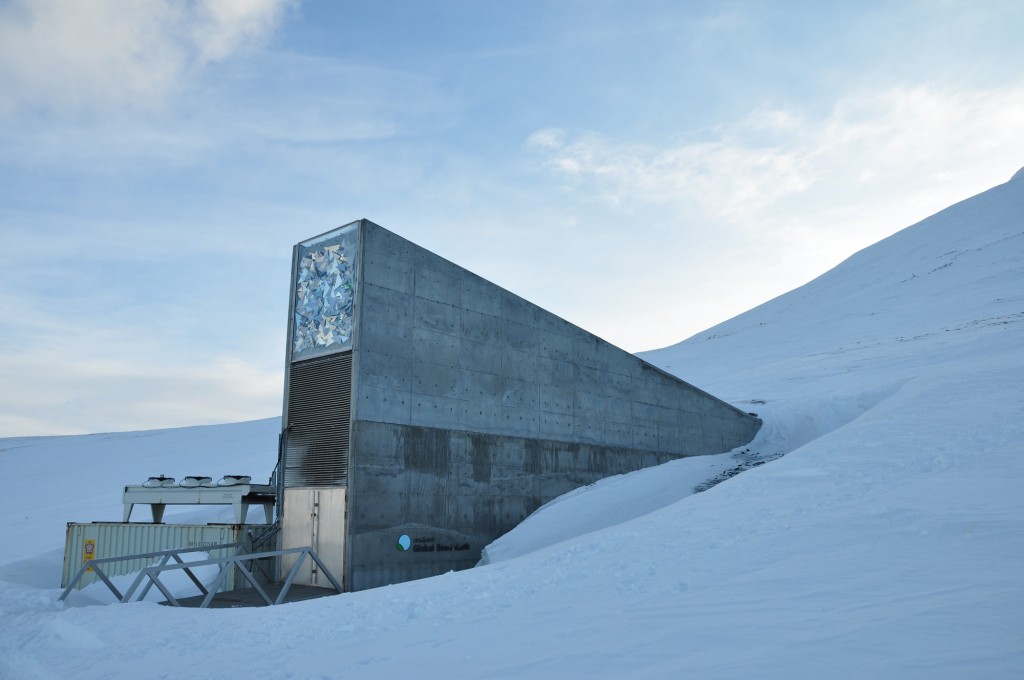
Global Seed Vault, Completed Seed Vault. Credit: Cary Fowler/Global Crop Diversity Trust
ll cibo è un tema essenziale della geopolitica e dell’antropologia globale. Questa sezione presenta dati su popolazione urbana e rurale, urbanizzazione, produzione, denutrizione (circa 800 milioni di persone tra il 2012 e il 2014) e molto altro. La FAO e il WFP hanno fornito dati, mappe e progetti-testimonial di questa condizione che sono stati poi tradotti dallo staff curatoriale del MAXXI in immagini, animazioni e info-grafiche. A rappresentare la presenza delle agenzie dell’ONU, il MAXXI ospita in questa sezione un grande cucchiaio blu, lo stesso che caratterizza le postazioni multimediali disposte sul sito espositivo di Expo Milano 2015 e che rappresenta il tema “Sfida Fame Zero • Uniti per un mondo sostenibile” con cui le Nazioni Unite intendono dare slancio ai temi legati all’alimentazione portandoli all’attenzione del grande pubblico.Insieme ai dati saranno presentati progetti-simbolo come il Centro norvegese di raccolta globale dei semi e la Seed Cathedral di Thomas Heatherwick realizzata in occasione di EXPO 2010 Shangai e la mostra fotografica di Chris Terry, per il progetto Family Meals di WFP e Commissione Europea che racconta gli spazi come luoghi di condivisione attraverso il cibo.
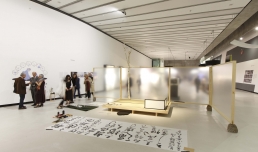
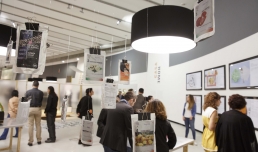
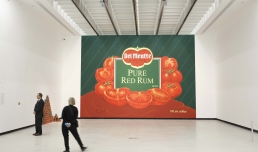
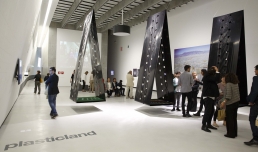
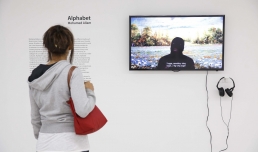
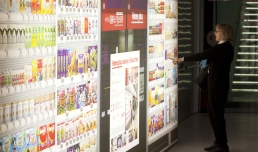
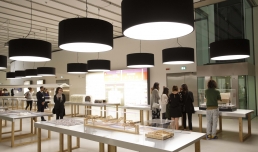
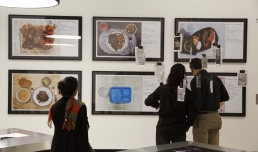
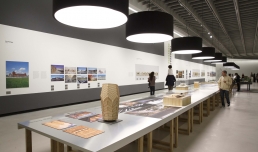
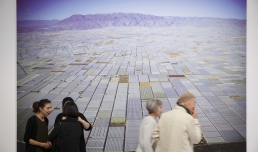
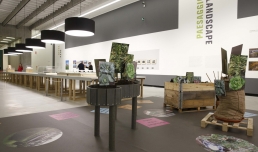

Gallerie 1 e 2
a cura di Pippo Ciorra insieme a Giulia Ferracci, Alessio Rosati, Alessandra Spagnoli
Nell’anno dell’EXPO di Milano, la mostra FOOD vuole approfondire i temi architettonici legati a immagazzinamento, distribuzione, consumo e smaltimento del cibo e delle materie prime, stimolando il confronto con le questioni primarie dello spazio e del tempo che abitiamo.
Una mostra per raccontare
come il cibo attraversa, cambia e influenza
il corpo, la casa, le strade, le città, il paesaggio
di tutto il mondo
Oltre 50 opere di diversi artisti e architetti che, in un percorso che si espande dalla dimensione del corpo umano fino a quella globale, dalla cucina alla casa, dalla città alla regione, al mondo, affrontano gli effetti globali politici, sociali, urbani, economici, che la produzione, la distribuzione, il consumo e lo smaltimento del cibo hanno sulle comunità e i territori.
FOOD dal cucchiaio al mondo è organizzata in sei sezioni: partendo dal corpo e – passando per la casa, la strada, la città, il paesaggio – si arriva al mondo, ovvero alle grandi questioni della geopolitica e degli assetti mondiali della produzione/distribuzione del cibo.
CORPO
CASA
STRADA
CITTÀ
PAESAGGIO
MONDO
Cataloghi della mostra
Catalogo della mostra
2015
FOOD dal cucchiaio al mondo